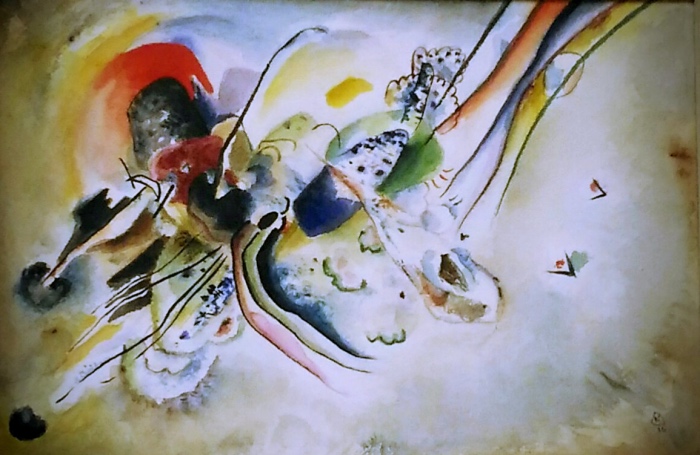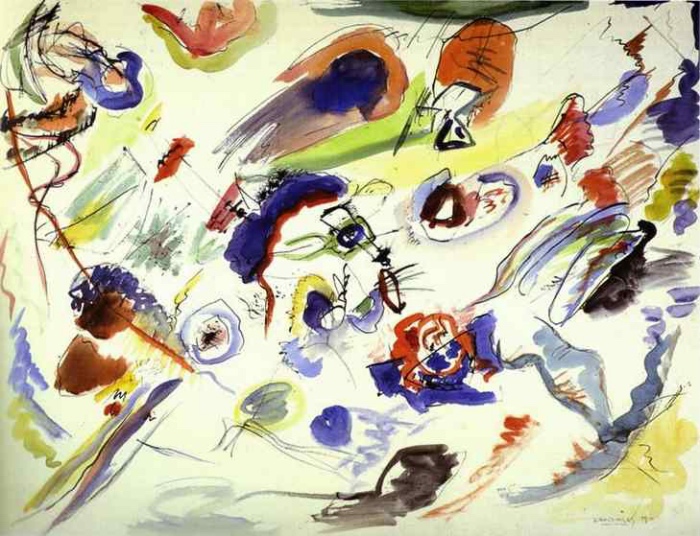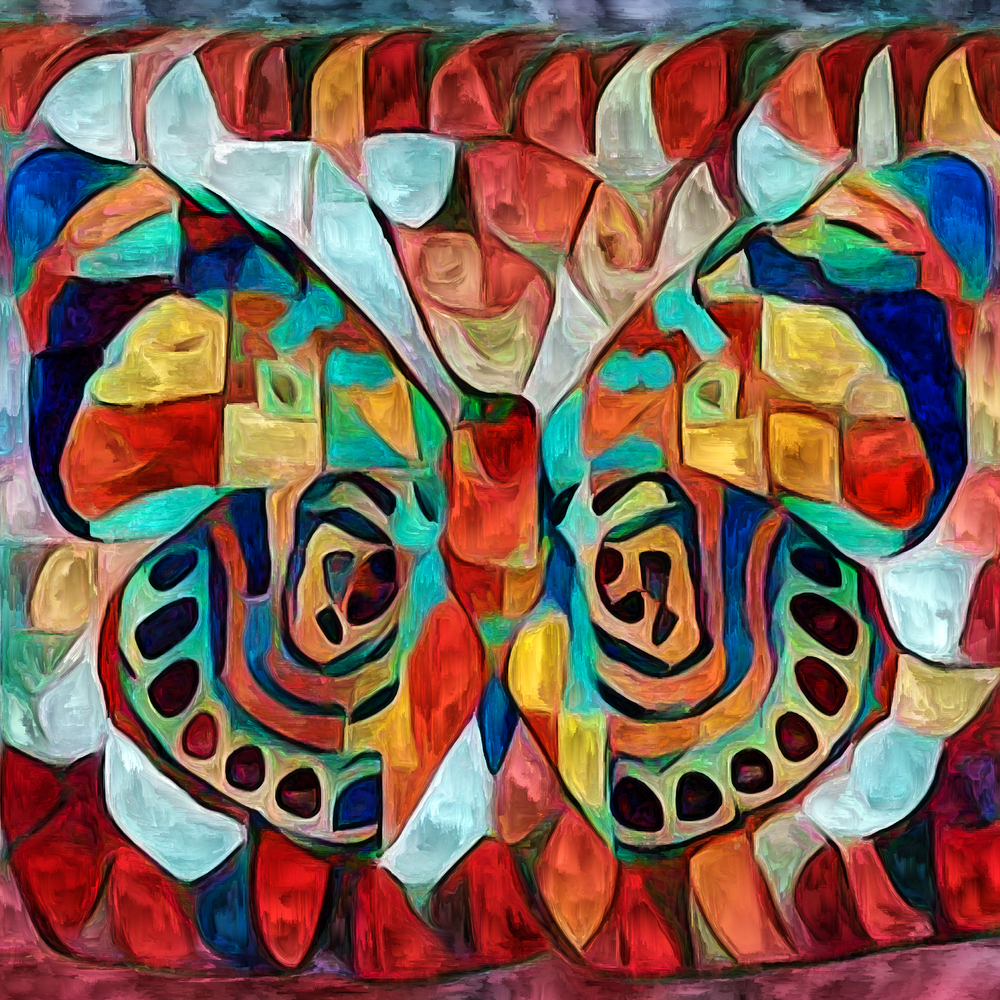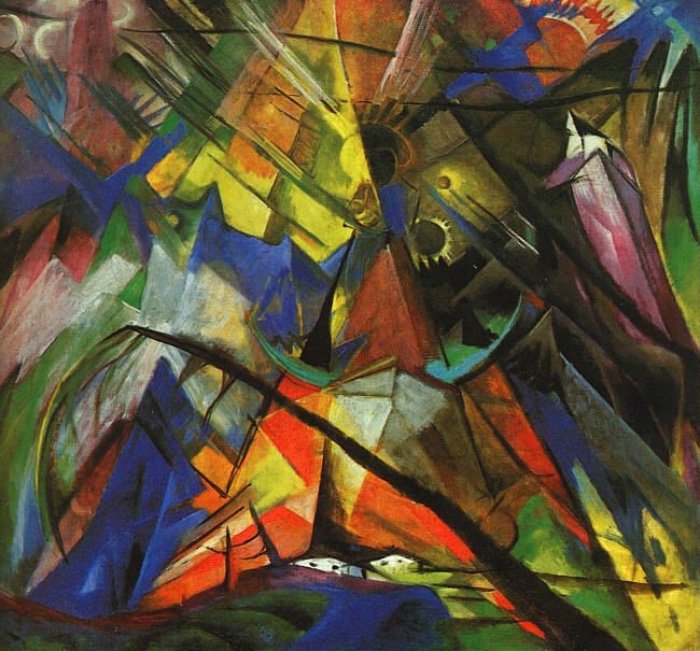
Composizione (1916) di Kandinskji – Museo del Novecento di Milano.
ABSTRACT ART
Abstract art is an artistic movement developed in the early 20th century, and takes on the meaning of “not real”.
The path which led to Abstract art originated from Symbolism, which recalled sounds, feelings and emotions without necessarily representing reality for what it is, but inserting images more similar to dreams and nightmares.
Abstract art starts from here, and simplifies images more and more, until it makes them unrecognizable and assigns to colours and forms a meaning you can’t understand without an explanation.
In this post you’ll find the 5 most important things to know to understand Abstract art and the major artists of this artistic movement.

Kandinskij , primo acquerello astratto (1910) – Centre Pompidou di Parigi
WHAT ABSTRACT ART IS
Abstract art is one of the most important artistic movements of the 20th century, because with it for the first time artists declare clearly that art doesn’t have to imitate reality anymore.
Basically, an abstract artwork looks for and finds brand new forms and images, different from the real ones, to express the artist’s inner experience.
WHEN ABSTRACT ART DEVELOPED
Abstract art developed in 1910, when the Russian painter Wassily Kandinsky painted a watercolour, considered the first abstract work in history of art.
The work has no title and consists of a series of spots of colour which express the general feeling of lightness and movement.
From that moment on for many artists Abstract art has become the way to free their own fantasy without limits and conventions that until then had imposed rules about painting.

Example of an abstract butterfly . Pattern of Art series. Abstract butterfly and colors rendered on digital canvas on subject of creativity and art.
ABSTRACT ART OF KANDINSKY
Wassily Kandinsky is the main theorist of Abstract art. In 1911 in Munich together with Franz Marc formed a group named “The blue Rider” (Der blaue Reiter) which several painters joined.
Kandinsky’s essay “Point and Line to Plane” published in 1926 defined the grammar and the syntax of this visual language, and is the point of reference for the 20th-century avant-gardes.
At the beginning, Kandinsky’s works were landscapes which progressively became abstract, whose meanings are expressed by colour and form. Later the artist began painting purely abstract works, consisting of geometric shapes mixing together with colours without any chance for you to understand their meaning.

Tirolo (1914), di Franz Marc, Staatsgalerie Moderner Kunst, Monaco.
ABSTRACT ART OF PAUL KLEE
Abstract art of Paul Klee, instead, is never completely separated from reality, and his works have recognisable elements.
In his landscapes you can glimpse roads, fields and also a perspective structure which defines depth and geometry of space.
In addition, in Klee’s works there’s an almost childlike lightness, which offers a disillusioned look at the world.
ABSTRACT ART OF MONDRIAN
At the beginning, Mondrian was a painter who expressed himself using Impressionist and post-Impressionist techniques.
In 1910 the artist starts a gradual process of abstraction of reality, and within few years his works became simpler, until they became pure geometric shapes.
Mondrian’s works became a combination of lines and shapes in which the main features are order, clarity and balance.
He painted works in which he found perfection and harmony which only mathematical and geometric proportions can provide.

Paul Klee, Palloncino rosso (1922) Solomon R. Guggenheim Museum, New York.

Piet Mondriaan, Tableau (1921).
.


hey, this is useful. I also found one blog”How To Paint Abstract Art For Beginners”you may like it.
Visit:https://www.showflipper.com/blog/How-To-Paint-Abstract-Art-For-Beginners
mi e stato molto utile per l’esame di terza media…… grazie di cuore
In bocca al lupo per l’esame allora 🙂